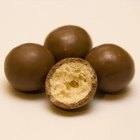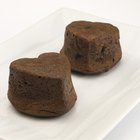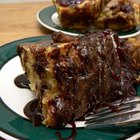When the first recipe for the gooey, melty, chocolaty staple of American campfires was published in the 1920s, the treat wasn't yet called a "s'more." This dessert has gone by different names and inspired scores of variations, but the original combination of graham crackers, milk chocolate and marshmallows has remained an American tradition over the years.
The First Recipe
The first known printed recipe was published in 1927, in a Girl Scout booklet, under the name "some more" -- presumably because any person who ate one inevitably asked for another.
Transitioning the Name
The name that the s'more originally went by explains the name we know it by today. "S'more" is an invented contraction of the name "some more," and it didn't catch on until decades after the treat's recipe was first published. Girl Scout books continued publishing recipes for some more's for another half century. In the 1970s, they adopted the truncated version of the name.
The Traditional Recipe
While s'mores have a firm place in American food culture, their creation and popularization was as much a matter of necessity as anything else. The simple recipe of three ingredients became popular largely because they are easy to take camping -- they don't take up much space, nor do they have to be refrigerated. They are also easy for campers to make for themselves, and while sitting around the communal space of the campfire -- simply toast a marshmallow on a stick and press it into a sandwich of a chocolate bar between two graham cracker squares.
Variations on a Classic
Just as the s'more's name has evolved over time, variations on the recipe are increasingly popular. Campfires, after all, are not always readily available, and while the treat can be emulated by melting a marshmallow in the microwave, recipes for more enterprising takes on the classic formula are easy to find. In addition to commercially available s'mores candy bars, other versions of the treat may include s'mores-inspired cupcakes, cookies, cake pops, parfaits and ice creams. With the flavors of only three key ingredients to consider, the different ways that this classic has been reinvented speaks to its popularity in modern American dessert culture.
Related Articles

What is the Origin of the Croissant?

About Colonial Desserts

History of M&M's Candies

How to Identify Gruen Watches

Butterfinger Candy Bar Facts

The History of Nestle Chocolate

The History of Tweed Perfume

Malted Milk Ball History

The History of Caramel Candy

What Drinks Can You Make With Black ...

Brands of Jams & Jellies

7 Healthy Brazilian Recipes to ...

Croton Watches History

What Is the Meaning Behind the Converse ...

What Is a Souffle Dish?

What Is a Frosted Malted?

Swiss Chocolate Facts

The Popular Mixed Drinks of the 50s & ...

Nutrition Facts for Tootsie Rolls

The History of Bread Pudding
References
Resources
Writer Bio
Tom Ryan is a freelance writer, editor and English tutor. He graduated from the University of Pittsburgh with a degree in English writing, and has also worked as an arts and entertainment reporter with "The Pitt News" and a public relations and advertising copywriter with the Carnegie Library of Pittsburgh.